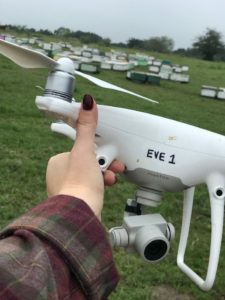
Among the most exciting aspects of BIP’s work is the wealth of data collected for years on honey bee health. This impressive, growing database is keeping a pulse on the health of American bees. With an abundance of information, and growing team to analyze it, we’ve begun to explore new methods to monitor and detect trends and to optimize sampling. It is exciting to be part of team that is open and enthusiast to embrace innovative technology and new interdisciplinary approaches to examine questions around honey bee health.
My personal background, for example, is as a geographer. The BIP team has encouraged my interest in applying spatial analysis to the incredible honey bee health data base. We’ve been working with drones (no, not male bees!) to collect aerial imagery of apiaries to examine the potential effects of colony positionality on disease susceptibility. This is just the beginning of using these data in machine learning algorithms. We’ve also begun looking at the relationships between land cover, agricultural forage value, environmental factors, and colony survivorship.
With all of this, the core of our mission remains to give beekeepers actionable information about apiary management and colony health. We strive to communicate in a way that neither water-downs import nuances nor overwhelms with inaccessible language. We look forward to continue conducting cutting-edge research projects like these to help beekeepers better manage their apiaries. By donating to our 2018 fundraiser, you can sustain our work for years to come! Please DONATE NOW.